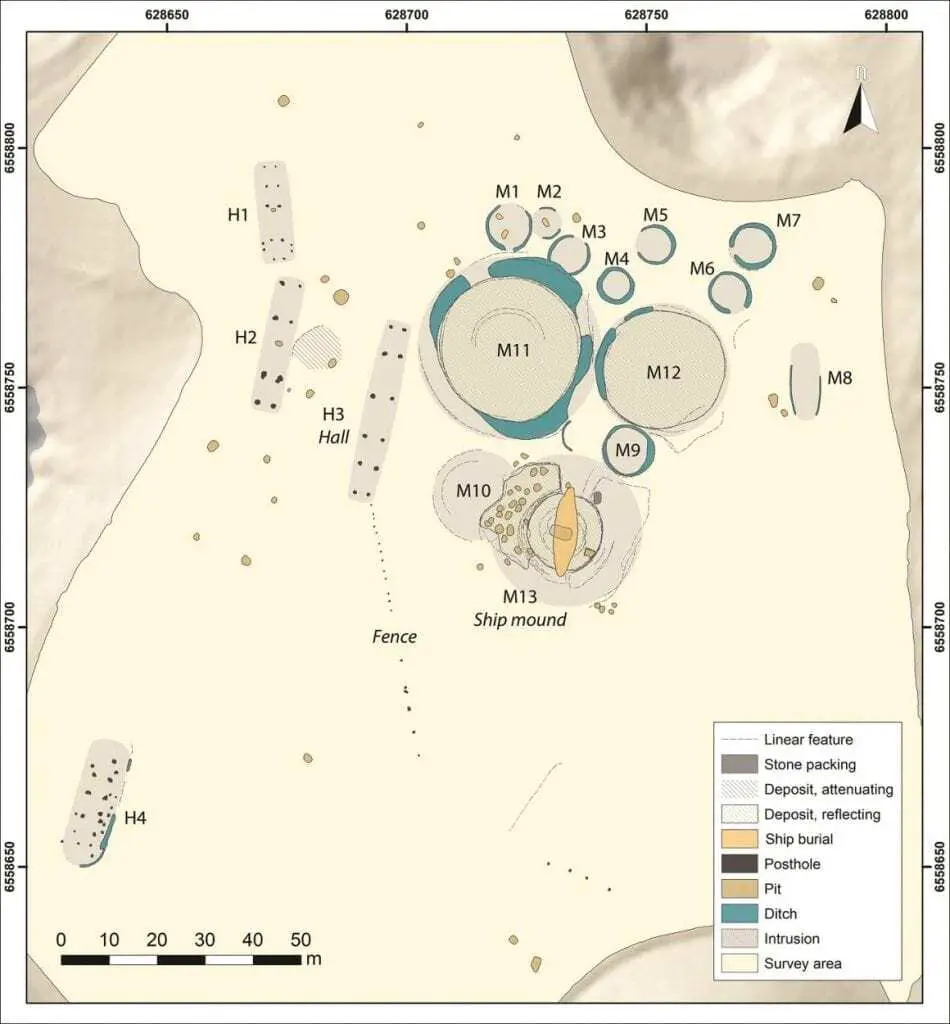Archaeologists conducting a ground-penetrating radar (GPR) study of an Iron Age funerary mound have discovered evidence of a previously unknown Viking ship burial in Gjellestad, Norway.
Ground-penetrating radar is a geophysical study using radar pulses to create an image of features, or the boundary between materials beneath the subsurface.
The study has been conducted adjacent to the Jell Mound (the second-largest Iron Age burial mound in Scandinavia) to determine whether local construction plans would place any undisturbed monuments at risk.
Archaeologists have announced that the survey has revealed evidence of 13 burial mounds (some over 30 metres in width), with one anomaly that has been interpreted as a Viking ship burial.

The survey data has also indicated structures on the site – such as common farmhouses and dwellings, with one structure being suggested to represent a feast hall and cult centre, or religious structure.
This suggests the site had humble origins as a farmstead which was then transformed into a high-status centre, with the construction of additional structures. The burial mounds tell a similar story, with some sharing features of a typical Iron Age burial site. Later, this cemetery was transformed into a place for elites, ultimately including a ship burial.
Lars Gustavsen, lead author of the study from the Norwegian Institute for Cultural Heritage Research said:
“The site seems to have belonged to the very top echelon of the Iron Age elite of the area, and would have been a focal point for the exertion of political and social control of the region. We suggest that the site has its origins in an ordinary mound cemetery, which was later transformed into a high-status cemetery represented by monumental burial mounds, hall buildings and a ship burial.”
As such, this site may span a key period of Scandanavian history, from the political turmoil following the collapse of the Western Roman Empire to the rise of the Vikings.
Since the initial announcement of finds, test excavations were carried out in 2019. Now, archaeologists are undertaking a full excavation of the ship burial.
Header Image Credit : Antiquity







